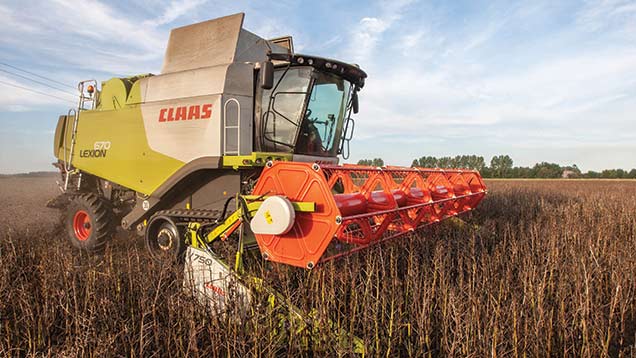Harvest 2015: Early yields suggest a good year for peas and beans
 ©Tim Scrivener
©Tim Scrivener This year has produced one of the best pea and bean harvests enjoyed for a number of years, with yields and quality looking good before the weather broke in late August.
According to Roger Vickers, chief executive at PGRO, both marrowfat and large blue peas had performed well.
Provisional results based on four trials put average yields at 5.59t/ha, with large blue Crackerjack and white pea Mascara topping the list at 102% of the control varieties. Aikido was the highest-yielding marrowfat at 95%, with Mantara the top maple pea at 97%.
See also: Why treating winter beans more like wheat will boost yields
Although the bean harvest was only just under way as Crops went to press, initial yields and quality were promising, says Mr Vickers.
“The first trial results came in at just under 5t/ha and there have been some good commercial crops about. As ever, there has been some variability from location to location, but although there was heavy black bean aphid pressure in July, crops have looked healthy throughout the growing season.”
The main concern was the change to wet weather towards the end of August, he adds. “Quality may start to suffer if we get a prolonged period of rain.”
According to Phil Rix, pulse manager at Dunns, pea yields had ranged from 2t/ha to 6t/ha, and quality before the rain was excellent.
“Yields in south-east England haven’t been particularly good, perhaps due to hot and dry weather, but elsewhere they have been above average.”
Early bean samples were unexciting, with some small seeds and bruchid damage, he adds. “But generally the first samples are not the best in terms of yield and quality.
“Everyone sees a potentially very high-yielding bean crop, but it is too early to make an educated judgement.”
For Kent grower Mark Bowsher-Gibbs, the winter bean harvest came two weeks ahead of schedule, and he was averaging 4.2t/ha for Wizard beans in the last week of August.
“The dry summer has brought an early harvest and small-sized beans, but it is still yielding a reasonable crop,” he says.
Some 100ha of winter beans are grown on the farm, but this area is likely to rise this autumn at the expense of oilseed rape, due to the fall in the price of rapeseed.
